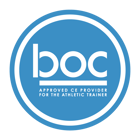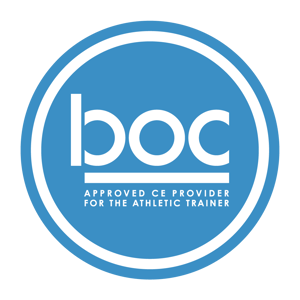Carpal Tunnel Syndrome: Conservative and Post-Surgical Management

Description
This course provides rehab professionals with up-to-date, evidenced-based information to understand and successfully manage patients who have been diagnosed with carpal tunnel syndrome. It discusses applied anatomy, basic pathophysiology of distal median nerve compression, risk factors and contributing causes, demographics, and commonly occurring complications and co-morbidities. It also provides an in-depth discussion of evaluation and conservative treatment options for carpal tunnel syndrome, based on current literature findings, as well as surgical intervention and post-surgical rehabilitation. This course will be immediately useful in clinical practice.



Physicourses is an AOTA Approved Provider of professional development. Course approval ID# 6295. This distance learning-independent course is offered at 0.7 CEUs Intermediate Level, OT Service Delivery, Foundational Knowledge. AOTA does not endorse specific course content, products, or clinical procedures.
Available Course Credits
| Alaska State PT & OT Board | 7.00 | ||
 |
AOTA | 0.70 | |
| Arizona State Board of Physical Therapy | 7.00 | ||
| Arkansas State Board of Physcial Thearpy | 7.00 | ||
 |
BOC | 7.00 | |
| California Physical Therapy Board | 7.00 | ||
 |
Colorado Physical Therapy License Board | 7.00 | |
| Connecticut Department of Public Health | 7.00 | ||
| Delaware Examining Board of Physical Therapists and Athletic Trainers | 7.00 | ||
| District Of Columbia Department of Health | 7.00 | ||
| FPTA | 7.00 | ||
| Georgia State Board of Physical Therapy | 7.00 | ||
| Hawaii Board of Physical Therapy | 7.00 | ||
| Idaho Physical Therapy Licensure Board | 7.00 | ||
| Indiana Physical Therapy Board | 7.00 | ||
| Iowa Board of Physical Therapy and Occupational Therapy | 7.00 | ||
| Kansas State Board of Healing Arts | 7.00 | ||
| Kentucky Board of Physical Therapy | 7.00 | ||
| Louisiana Physical Therapy Board | 7.00 | ||
| Maine Board of Physical Therapy | 7.00 | ||
| Maryland Board of Physical Therapy Examiners | 0.70 | ||
| Massachusetts Board of Allied Health Professionals | 7.00 | ||
| Michigan Board of Physical Therapy | 7.00 | ||
| Mississippi State Board of Physical Therapy | 7.00 | ||
| Missouri Advisory Commission for Physical Therapists | 7.00 | ||
| Montana Board of Physical Therapy Examiners | 7.00 | ||
| Nebraska Department of Health and Human Services | 7.00 | ||
| New Mexico Physical Therapy Board | 7.00 | ||
| North Carolina Board of Physical Therapy Examiners | 7.00 | ||
| North Dakota Board of Physical Therapy | 7.00 | ||
| Office of Professional Regulation, Vermont Secretary of State | 7.00 | ||
| Oklahoma Board of Medical Licensure and Supervision - Physical Therapy | 7.00 | ||
| Oregon Board of Physical Therapy | 7.00 | ||
| Pennsylvania Bureau of Professional and Occupational Affairs - Physical Therapy | 7.00 | ||
| Physical Therapy Governing Board New Hampshire | 7.00 | ||
| South Carolina Board of Physical Therapy | 7.00 | ||
| South Dakota Physical Therapy License Board | 7.00 | ||
| State of Alabama Board of Physical Therapy | 7.00 | ||
| State of Rhode Island Department of Health | 7.00 | ||
| Tennessee Board of Physical Therapy | 7.00 | ||
| Utah Physical Therapy Licensing Board | 7.00 | ||
| Virginia Board of Physical Therapy | 7.00 | ||
| Washington State Board of Physical Therapy | 7.00 | ||
| West Virginia Board of Physical Therapy | 7.00 | ||
| Wisconsin Physical Therapy License Board | 7.00 | ||
| Wyoming Board of Physical Therapy | 7.00 |
Course Content
| 421a Carpal Tunnel Syndrome: Conservative and Post-Surgical Management | Module | ||
| Course Evaluation | Module |
Sarah R.Stillings, MA, PT, MPT, CHT
Sarah R. (Sally) Stillings is a PT and Certified Hand Therapist in Texas. She received her physical therapy degree from the University of North Carolina at Chapel Hill. Prior to becoming a therapist, Sally taught university-level writing courses and was assistant editor of The Journal of Craniomandibular Practice. In her extensive career as a PT, she has held a variety of clinical, teaching, administrative, and business roles, including general PT practitioner, upper extremity specialist, clinic manager, hand therapy clinic coordinator, continuing education (CE) instructor, and CE course administrator. She has also served as Executive Director of the Kellermann Foundation, a U.S. nonprofit organization supporting healthcare and community development in Uganda, East Africa. Her work now focuses on creating evidence-based CE materials for rehab professionals. Sally is a lifelong runner who celebrates all those who cover the ground.

421a Carpal Tunnel Syndrome: Conservative and Post-Surgical Management
Course Objectives
After successfully completing this continuing education course, the learner should be able to:
- Identify applied anatomy of the upper extremity peripheral nerves; bones, muscles, and ligaments of the distal forearm, wrist, and hand; microanatomy of peripheral nerves.
- Recognize how anatomical attributes contribute to the effects of carpal tunnel syndrome.
- Identify causes and risk factors associated with carpal tunnel syndrome (CTS).
- Identify other causes of paresthesia and pain that can mimic CTS.
- Recall key diagnostic factors and standard methods used to diagnose CTS.
- Identify key components and special tests in an evaluation for a patient with CTS.
- Choose and apply evidence-based conservative therapeutic interventions for CTS.
- Identify and describe the types of surgical interventions for CTS.
- Identify components of a post-surgical patient evaluation following CTS release.
- Identify possible complications following surgical intervention for CTS.
- Recall the components of post-surgical rehabilitation following CTS release.
- Recognize when to refer patients for specialized care following CTS release in case study.
421a Carpal Tunnel Syndrome: Conservative and Post-Surgical Management
Table of Contents Page #
HOUR 1
Course Instructions 2
About the Author / Course Description 3
Course Objectives 4
Table of Contents 5
Introduction 8
Definitions
History 9
Chapter 1: Applied Anatomy and Physiology 13
Gross Anatomy Review: Distal Forearm, Wrist, and Hand 13
Bony Anatomy of the Distal Forearm 14
Bony Anatomy of the Wrist and Hand
Ligamentous Complex of the Wrist 16
The Median Nerve 18
Musculature of the Volar Forearm & Hand 19
HOUR 2
Peripheral Nerve Anatomy and Physiology Review 21
Peripheral Nervous System Function and Structure 22
Peripheral Nerve Microanatomy 23
Case Study 1 25
Chapter 2: Pathophysiology and Presentation 26
Pathophysiology of Peripheral Nerve Compression 26
Classification of Nerve Injuries 29
Seddon’s Classification
Neurapraxia (conduction blocked) 29
Axonotmesis (axon divided) 30
Neurotmesis (nerve divided)
Sunderland’s Classification 31
Clinical Presentation of CTS 32
Causes of CTS 33
Trauma-Related Acute CTS 34
Trauma-Related Chronic CTS
HOUR 3
Arthritis 35
Space-Occupying Lesions
Flexor Tenosynovitis 36
Idiopathic Chronic CTS 37
Risk Factors and Possible Contributors 38
Systemic/Metabolic Disorders
Medications 39
Double-Crush Phenomenon 39
Occupational Factors 39
Exposure to vibration 40
Repetitive use 41
Other Risk Factors 42
Epidemiology 43
Differential Diagnosis 44
Diagnostic Testing
Case Study 2 46
Chapter 3: Conservative Treatment Approaches 47
Patient Evaluation 47
General Medical History
History of the Current Complaint 48
Physical Examination 50
Visual inspection
Range of motion measurements 51
HOUR 4
Sensory Evaluation
Two-point discrimination testing 51
Vibratory sensibility testing
Semmes-Weinstein monofilament test 52
Strength Assessment 53
Special Tests 55
Phalen’s test 56
Reverse Phalen’s test 57
Tinel’s sign
Durkan’s test 58
Hand elevation test 58
Flick sign 59
Self-Report Instruments 59
Assessing Comorbidities 60
Therapeutic Interventions 61
Orthosis Use
HOUR 5
Exercise 64
Tendon gliding
Nerve gliding 66
Patient Education 67
Manual Therapy 68
Neural mobilization
Joint and soft tissue mobilization 69
Carpal tunnel stretching
Modalities 70
Heat and cold
Ultrasound
Iontophoresis 71
Low-level laser therapy
Alternative Treatments 72
Acupuncture
Magnetic field
therapy
Yoga
Long-Term Prognosis 73
Case Study 3 74
Chapter 4: Medical and Surgical Interventions 75
Corticosteroid Injections
Extracorporeal Shock Wave Therapy (ESWT)
Pulsed Radiofrequency76
Indications for Surgery 77
HOUR 6
Types of Surgery 78
Open CTR 79
Mini-open CTR 80
Endoscopic CTR 81
Ultrasound-Guided CTR 82
Alternative Surgical Procedures
Post-Surgical Care
Prognosis 83
Complications 84
Case Study 4 85
Chapter 5: Post-Surgical Rehabilitation 86
Post-Surgical Patient Evaluation
Edema Assessment 87
Range of Motion Measurements 88
Wound/Scar Assessment 89
Interventions 90
Patient Education
Exercise 90
Tendon gliding and nerve gliding
Strengthening
HOUR 7
Addressing Complications 91
Pillar pain
Scar tenderness and hypertrophic scar 92
Joint stiffness
Complex regional pain syndrome 93
Case Study 5 94
Conclusion 95
Appendix A: Evaluation Resources 96
References 99
Customer Cancellation:
Customers may request cancellations of their enrollment or subscription in our digital or live educational services, subject to the terms outlined below. Cancellation requests must be made in writing, either through email or through our designated cancellation process.
Refund Policy:
Refunds will be provided according to the following guidelines: i) For cancellation requests made within 5 days of the initial enrollment or subscription, a full refund will be issued. Refunds will be issued using the same method of payment used for the original transaction, unless otherwise agreed upon in writing.
Provider Cancellation:
In the event Physicourses cancels your course, you will be issued a full refund or transfered to a course of equal or greater value.
Physicourses Conflict of Interest Disclosure Policy for Authors and Staff:
All persons in a position to control the content of any educational activity (authors or staff from Physicourses) are required to disclose to Physicourses any potentially biasing or potential conflict of interests in relationships of a financial, professional, or personal nature.
The intent of this disclosure is not to prevent authors or staff with commercial affiliations from planning an educational activity, or to prevent a Presenter with commercial affiliations from presenting, but rather to inform Physicourses of any potentially biasing relationships so that conflicts are resolved prior to the activity.
It is the policy of Physicourses to ensure balance, independence, objectivity and scientific rigor in all of its continuing education activities. All relevant conflicts of interest identified by the planner, presenter, or as determined by Physicourses will be disclosed to the audience verbally and in writing prior to the start of the presentation.
Definitions for Authors/Staff:
Relevant financial relationships are those relationships in which you benefit by receiving a salary, royalty, intellectual property rights, gift, speaking fee, consulting fee, honoraria, ownership interest (e.g., stocks, stock options, or other ownership interest, excluding diversified mutual funds), or other financial benefit. Financial relationships can also include “contracted research” where the institution gets the grant and manages the funds and you are the principal or named investigator on the grant.
Educational Level: Intermediate
Target Audience: PT, PTA, OT, OTA, ATC
Course Completion Requirements: Passing an online exam with 70% or greater will be required to earn continuing education credit
This course is approved for 0.9 CEUS. 9 contact hours
Physicourses is committed to ensuring accessibility to the most extensive audience possible. If you have any questions or special needs requests, please contact us at info@physicourses.com.